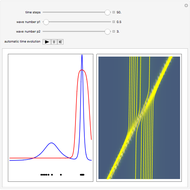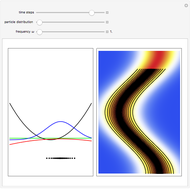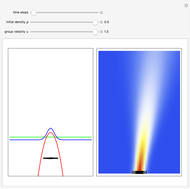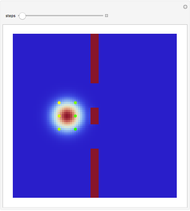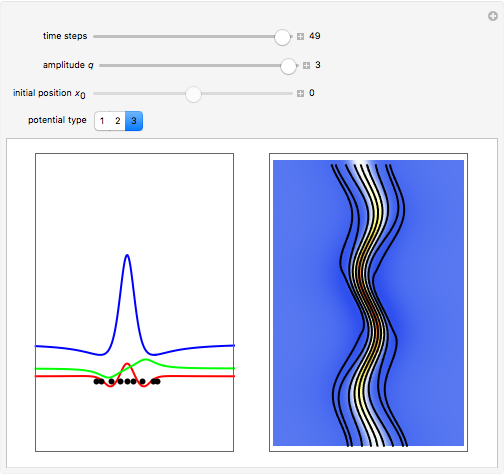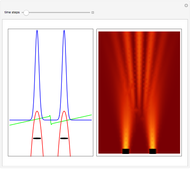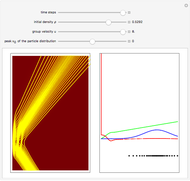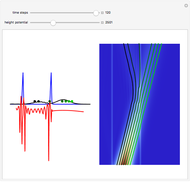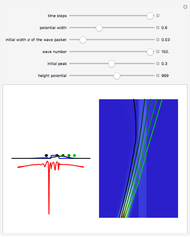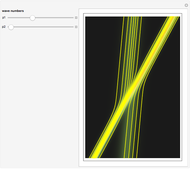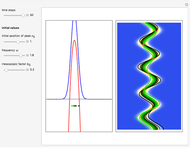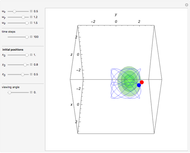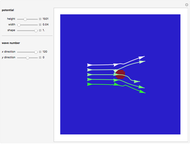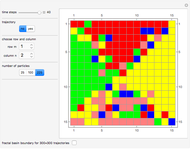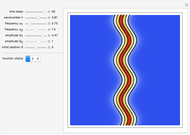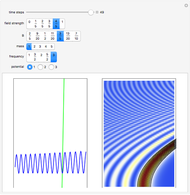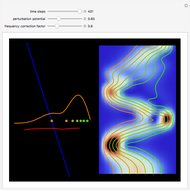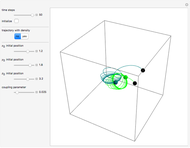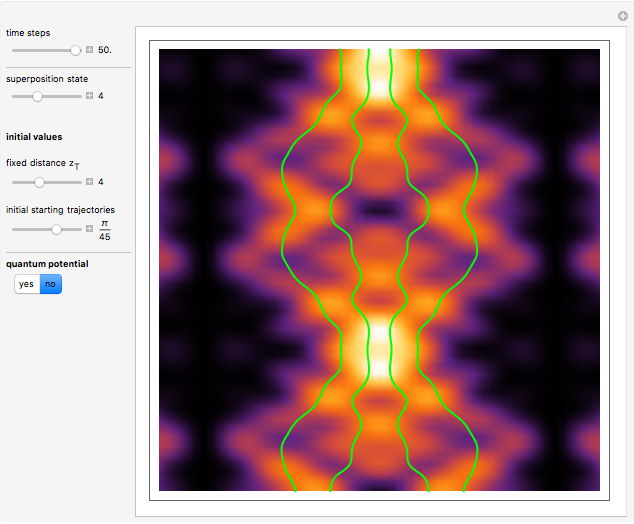The Superposition Principle in the Causal Interpretation of Quantum Mechanics

Requires a Wolfram Notebook System
Interact on desktop, mobile and cloud with the free Wolfram Player or other Wolfram Language products.
The principle of quantum superposition states that the complex-valued wavefunction can be a linear combination of several quantum eigenstates simultaneously. The modulus (or absolute value) squared of the total wave function represents a probability density of finding a quantum particle only. In the causal interpretation of quantum theory, developed in 1952 by David Bohm, the concept of trajectories is introduced, in which the particles are guided by a real phase function (or quantum potential) from the total wavefunction (pilot wave). In the eikonal representation, the phase function for a superposed state from which the velocity is determined becomes very complicated. This Demonstration discusses a superposition of up to 15 states of the density distribution for a quantum particle in the box with infinitely high walls. As the superposed wave packet spreads in an infinite square well, the paths of the quantum particles approach in a way similar to a classical trajectory.
[more]
Contributed by: Klaus von Bloh (January 2014)
After work by: Enrique Zeleny
Open content licensed under CC BY-NC-SA
Details
The guiding equation for the particle velocity is  , which is calculated from the gradient of the phase of the wavefunction in the energy representation. In the eikonal form
, which is calculated from the gradient of the phase of the wavefunction in the energy representation. In the eikonal form  the total wavefunction becomes
the total wavefunction becomes
 .
.
In this case, the amplitude and the phase reduce to

and
 ,
,
from which the velocity is derived by differentiating the total phase function

with

and
 ,
,
where  , and so on.
, and so on.
In the case that the phase function does not depend on the variable  , the velocity becomes
, the velocity becomes

with

and
 ,
,
which could be simplified to
 .
.
Local singularities in the velocity  do appear to exist for certain
do appear to exist for certain  and
and  values (
values ( ), which makes the trajectories very unstable.
), which makes the trajectories very unstable.
In the program, to make the results more accurate, increase PlotPoints, AccuracyGoal, PrecisionGoal, and MaxSteps.
References
[1] P. Holland, The Quantum Theory of Motion, Cambridge: Cambridge University Press, 1993.
[2] D. Bohm, Quantum Theory, New York: Prentice-Hall, 1951.
[3] I. Marzoli, F. Saif, I. Bialynicki-Birula, O. M. Friesch, A. E. Kaplan, and W. P. Schleich, "Quantum Carpets Made Simple." arXiv:quant-ph/9806033.
Snapshots
Permanent Citation







